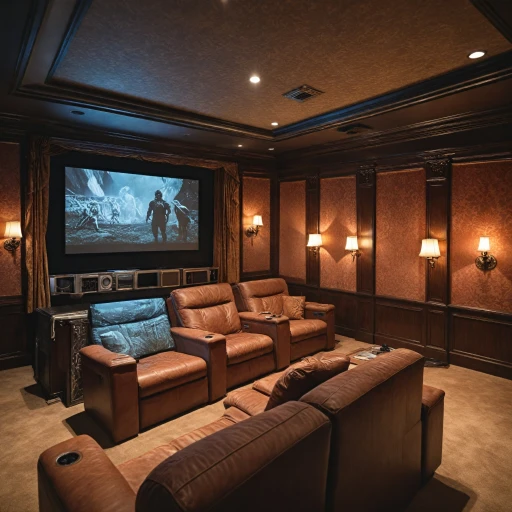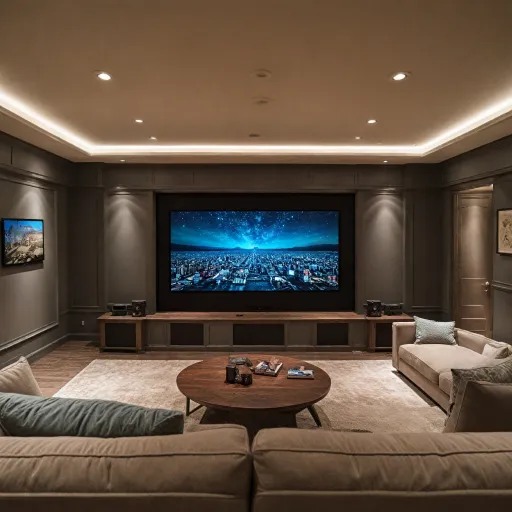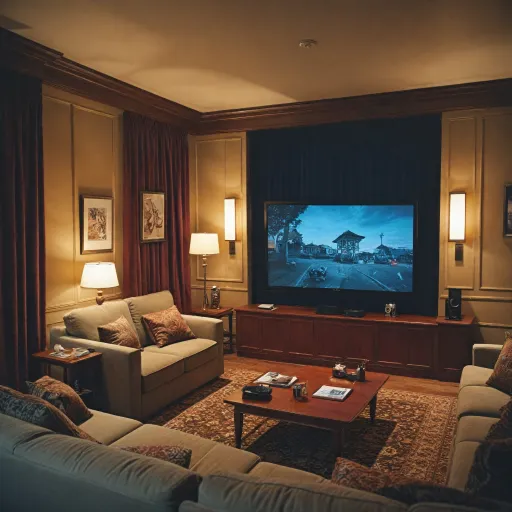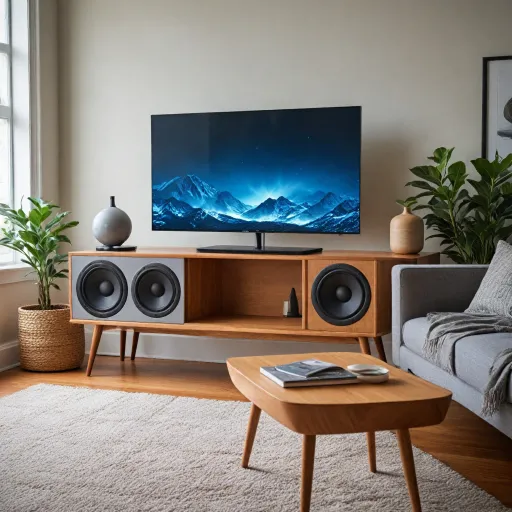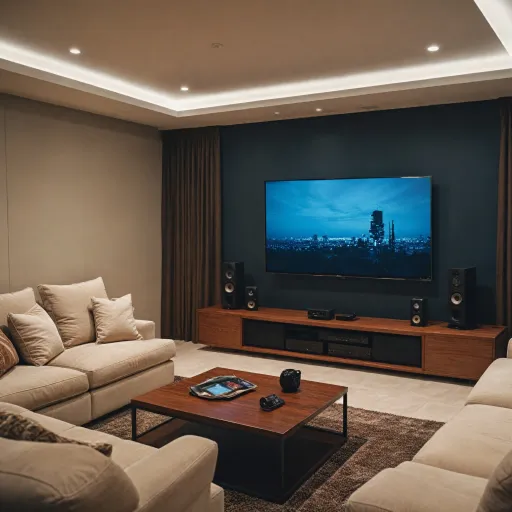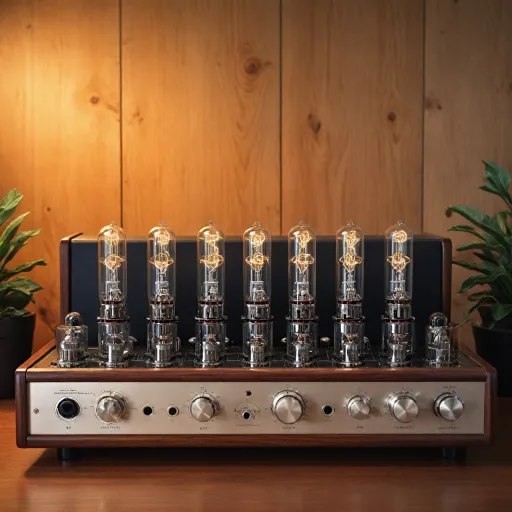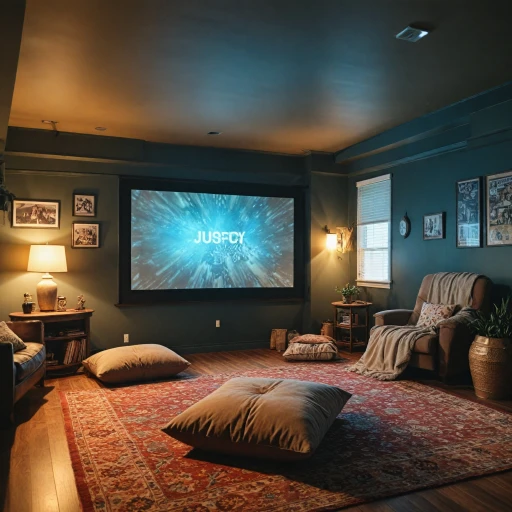
Understanding ALR Screens
Decoding the Magic of ALR Screens
When it comes to enhancing your home theater experience, understanding the technology behind Ambient Light Rejecting (ALR) screens is crucial. ALR screens are designed to combat the challenges posed by ambient light, which can often wash out the colors and reduce the contrast of your projected image. This makes them an ideal choice for rooms that aren't completely dark, offering a vibrant and clear picture even in well-lit environments.
ALR screens work by selectively reflecting the light from your projector while rejecting other ambient light sources. This is particularly beneficial for short throw and ultra short throw projectors, which are becoming increasingly popular for home theaters due to their compact design and ability to project large images from a short distance.
With the rise of advanced projection technologies like triple laser and ultra short throw projectors, ALR screens have become a staple for those looking to maximize their viewing experience. Brands like Elite Screens and AWOL Vision offer a range of ALR projector screens that cater to different needs and budgets. Whether you're considering a motorized floor rising screen or a fixed frame option, there's an ALR screen to suit your setup.
For those interested in outdoor projector setups, ALR screens can also be a game-changer, allowing for clear viewing even during the day. The enhance your viewing experience with inflatable movie projector screens guide offers more insights into outdoor options.
As you explore the world of ALR screens, consider factors like the viewing angle, the type of projector you have, and your room's lighting conditions. These elements will influence your choice and ensure you get the best performance from your home theater system.
Why Choose a 120-Inch Screen?
The Appeal of a Larger Screen Size
When it comes to creating an immersive home theater experience, the size of your screen plays a crucial role. Opting for a 120-inch screen can significantly enhance your viewing experience, making you feel like you're part of the action. This size is ideal for those who want to replicate the cinema experience at home, offering a wide viewing angle that can accommodate multiple viewers comfortably.
Compatibility with Projectors
A 120-inch screen pairs well with various types of projectors, including short throw and ultra short throw projectors. These projectors are designed to project large images from a short distance, making them perfect for home theaters with limited space. Brands like AWOL Vision and Elite offer projectors that are compatible with larger screens, ensuring that you get a crisp and clear image.
Considerations for Ambient Light
One of the challenges of using a large screen is dealing with ambient light. ALR (Ambient Light Rejecting) screens are specifically designed to combat this issue, allowing you to enjoy vibrant images even in well-lit rooms. This feature is particularly beneficial if your home theater is not in a completely dark environment.
Cost Implications
While a 120-inch screen may come with a higher price tag, the investment is often justified by the enhanced viewing experience it provides. The price of the screen can vary based on the type of ALR technology used, the brand, and additional features like motorized floor rising capabilities. It's essential to consider your budget and the specific features you need when selecting a screen.
For more insights on choosing the right screen size for your home theater, you can explore this guide.
Comparing ALR Screens to Traditional Screens
Analyzing ALR Screens Against Conventional Options
When you're investing in a home theater setup, understanding the difference between screen types is crucial. ALR (Ambient Light Rejecting) screens stand out as they specialize in delivering a high-quality viewing experience, especially in environments that aren't entirely dark. Choosing an ALR screen might involve considering options like the Elite Screens Aeon series, which are optimized for viewing angles and light rejection, making them suitable even in rooms with moderate natural lighting. In contrast, traditional projector screens demand controlled lighting environments to achieve the best image. This often limits their practicality unless you can dedicate a room to a cinematic atmosphere. However, ALR screens employ advanced materials to reflect projected light towards the viewer while rejecting ambient light from other directions. This means a sharper, more vivid picture overall, crucial for those using projectors in spaces not completely devoid of light. Furthermore, ALR screens work exceptionally well with short throw projectors and ultra short throw projectors (UST). Devices such as the AWOL Vision and triple laser projectors integrate smoothly with these screens, offering stunning visual output without the need for a completely dark room, as they project from a close distance. Price is certainly a consideration too. While ALR screens might have a higher initial cost compared to traditional options, the enhancement in picture quality often justifies the investment. A price screen comparison might reveal that while the upfront cost is steeper, the longevity and quality of ALR screens provide a justifiable advantage. It's important to explore more about enhancing your home theater experience with the right elements. You can dive deeper into valuable insights on optimizing your home theater by visiting this right streaming cables guide. Ultimately, opting for an ALR screen might elevate your viewing sessions, making it an exemplary choice for those seeking an intermediate solution between professional theater results and everyday household conditions. The choice often depends on your specific needs, space limitations, and the type of light environment you’re working with. Exploring customer support options and reviews on platforms like Amazon can also aid in making an informed decision.Installation Considerations for a 120-Inch ALR Screen
Key Considerations for Installing a Large ALR Screen
Installing a 120-inch Ambient Light Rejecting (ALR) screen in your home theater requires careful planning and attention to detail to ensure optimal performance from your projector setup. Here are some important factors to consider when installing this crucial component:- Room Size and Layout: The size and shape of your room play a significant role in the placement of your screen and projector. Ensure the room can accommodate the expansive 120-inch screen, without any obstructions that could affect the viewing experience. A spacious room also helps in providing the right distance for short throw or ultra-short throw projectors.
- Projector Type: Choosing the correct projector is vital. ALR screens are particularly beneficial when paired with ultra-short throw projectors as they deliver bright images even in ambient light conditions. Brands like AWOL Vision provide reliable options that are known for their quality in such setups.
- Light Control: While ALR screens are designed to work in rooms with ambient light, they still perform best in controlled lighting environments. Consider employing blackout curtains or shades to minimize external light sources that might interfere with your viewing experience.
- Installation Type: You can select from several installation types—wall-mounted, motorized floor rising, or a ceiling-hung style. These options provide flexibility depending on your space constraints and aesthetic preferences. Items like the Elite Screens on Amazon offer solutions that cater to different setups.
- Proper Alignment: The alignment between the projector and the screen should be precise. Incorrect alignment can warp the image or lead to uneven lighting, diminishing the quality of your viewing experience. Ensure the screen is level and the projector is correctly positioned to maximize the screen’s viewing angle.
- Customer Support and Installation Services: Opt for brands that offer excellent customer support; they can assist with troubleshooting any installation issues. Consider hiring professional installation services if the setup appears too complex, ensuring everything is perfectly aligned and operational.
Budgeting for Your Home Theater Setup
Financial Planning for Your Dream Setup
When it comes to establishing a home theater equipped with a 120-inch Ambient Light Rejecting (ALR) screen, budgeting becomes a crucial aspect. Here’s a breakdown to guide you toward a cost-effective solution. Understanding the price variations is vital. ALR screens, due to their advanced technology and ability to enhance picture quality in environments with ambient light, can carry a higher price tag compared to traditional screens. This technology, ideal for short throw and ultra-short throw projectors, significantly influences the price of both the screen and the compatible projectors.- Projector Costs:
- For a high-definition experience, consider budget-friendly options or premium models like the AWOL Vision’s triple laser projectors. While the initial cost might be higher, investing in a quality projector ensures longevity and superior image projection.
- Screen Pricing:
- Prices for a 120-inch ALR screen vary based on additional features like motorized floor operation or static mount. Elite Screens and other brands available on platforms like Amazon cater to different price points; ensure you have an alr screen that best meets your viewing needs.
- Installation Costs:
- Factor in installation expenses, particularly for setups requiring professional adjustments or you plan a motorized operation. Hiring an expert can save time and enhance the performance of your screen set up by optimizing viewing angles and light handling capabilities.
- Accessorizing and Extras:
- Beyond the projector and screen, consider necessary add-ons like a solid floor rising accessory for your projector or advanced ambient light solutions that ensure ultimate discretion and quality in projection.
- Customer Support and Warranties:
- Allocate part of your budget for reliability aspects such as extended warranties or customer support from reputed manufacturers known for honoring their commitments.
Maintenance and Care for ALR Screens
Prolonging Your ALR Screen's Lifespan
Maintaining and caring for your ALR screen is essential to ensure a long-lasting home theater experience. The unique material of ALR screens requires specific attention to maintain its ability to reject ambient light effectively. Here is how you can take care of your ALR screen:
- Regular Cleaning: Dust and dirt can accumulate on the screen surface, affecting its projection quality. Use a soft, lint-free cloth to gently wipe the screen. For stubborn spots, lightly dampen the cloth with water, avoiding any chemical cleaners.
- Control the Environment: Ensure the room's ambient light is minimized to maintain optimal screen performance. Investing in blackout curtains can help.
- Positioning and Location: The screen's placement can influence its durability. Ensure it's mounted securely, away from direct sunlight or heat sources to prevent material degradation.
- Use a Suitable Projector: Pair your ALR screen with the appropriate projector, such as a short throw or ultra short throw projector, to fully utilize its capabilities. Check compatibility in terms of throw and projection distance.
- Customer Support and Warranty: Familiarize yourself with the manufacturer's guidelines and warranty conditions. Companies like Elite and AWOL Vision often offer customer support and resources to assist with screen maintenance.
Considering these factors will enhance the lifespan and performance of your ALR screen, making your investment worthwhile despite the price. Enjoy a clear and vivid movie night experience, knowing your setup is in top condition.

